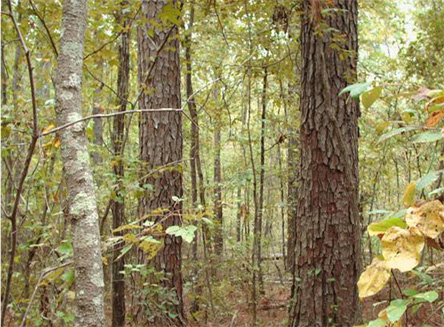Pine-Oak Flatwoods in Mississippi JoVonn G. Hill |
The Flatwoods physiographic region is adjacent to the Black Belt, and the forests of the regions are quite different. The Flatwoods physiographic region extends south of Houston, Chickasaw County, along the western edge of the Black Belt into Alabama, and ranges from three to fifteen miles wide (Lowe, 1919). Lowe goes on to characterize this region by the following statement: “The soil of this region is prevailingly a heavy, tenacious dark gray clay with poor drainage, usually wet and cold, except in dry years, and more or less acid. This soil is lacking in lime and is deficient in other elements of plant food. The close texture of the heavy clay soil makes it very tenacious, so that it is either too wet to favor plant growth, or when dry becomes too hard and compact. The region is not one of rich growth and those species present are usually of xerophytic habit, which fits them for the extreme alternate conditions of sterile, water-logged, acid soil, and dry soil of stony hardness.” Lowe lists Pinus taeda, Quercus falcata, and Q. stellata as the dominant tree species forming “open” forest. Liquidambar styraciflua L., sweetgum, and Acer rubrum L., red maple, are also dominant tree species in the flatwoods.
|
Literature Cited Lowe, E.N. 1919. Plants of Mississippi: A list of flowering plants and ferns. Mississippi State Geological Survey Bulletin 17: 1-292. |



